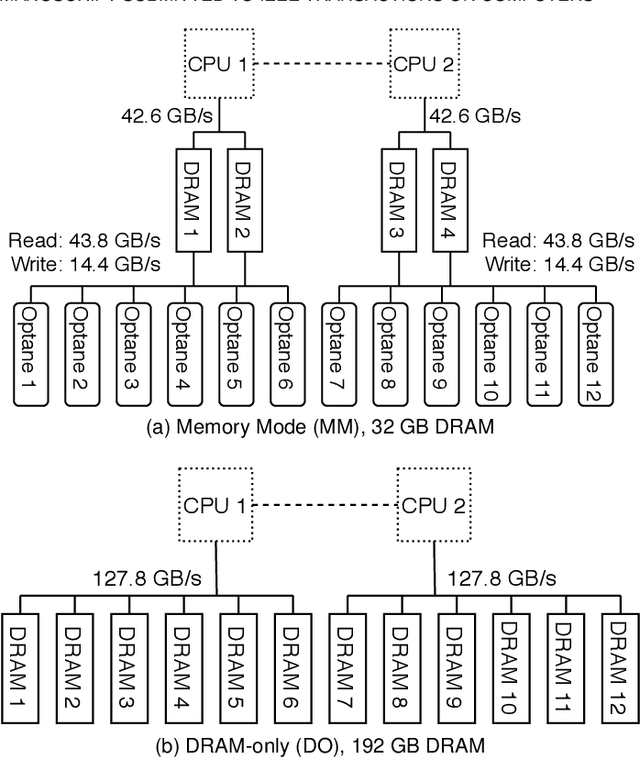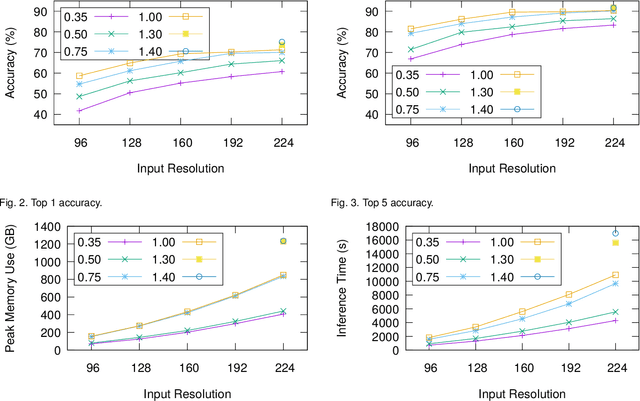Harald Servat
Enabling Homomorphically Encrypted Inference for Large DNN Models
Apr 29, 2021



Abstract:The proliferation of machine learning services in the last few years has raised data privacy concerns. Homomorphic encryption (HE) enables inference using encrypted data but it incurs 100x-10,000x memory and runtime overheads. Secure deep neural network (DNN) inference using HE is currently limited by computing and memory resources, with frameworks requiring hundreds of gigabytes of DRAM to evaluate small models. To overcome these limitations, in this paper we explore the feasibility of leveraging hybrid memory systems comprised of DRAM and persistent memory. In particular, we explore the recently-released Intel Optane PMem technology and the Intel HE-Transformer nGraph to run large neural networks such as MobileNetV2 (in its largest variant) and ResNet-50 for the first time in the literature. We present an in-depth analysis of the efficiency of the executions with different hardware and software configurations. Our results conclude that DNN inference using HE incurs on friendly access patterns for this memory configuration, yielding efficient executions.
MetH: A family of high-resolution and variable-shape image challenges
Nov 29, 2019



Abstract:High-resolution and variable-shape images have not yet been properly addressed by the AI community. The approach of down-sampling data often used with convolutional neural networks is sub-optimal for many tasks, and has too many drawbacks to be considered a sustainable alternative. In sight of the increasing importance of problems that can benefit from exploiting high-resolution (HR) and variable-shape, and with the goal of promoting research in that direction, we introduce a new family of datasets (MetH). The four proposed problems include two image classification, one image regression and one super resolution task. Each of these datasets contains thousands of art pieces captured by HR and variable-shape images, labeled by experts at the Metropolitan Museum of Art. We perform an analysis, which shows how the proposed tasks go well beyond current public alternatives in both pixel size and aspect ratio variance. At the same time, the performance obtained by popular architectures on these tasks shows that there is ample room for improvement. To wrap up the relevance of the contribution we review the fields, both in AI and high-performance computing, that could benefit from the proposed challenges.
 Add to Chrome
Add to Chrome Add to Firefox
Add to Firefox Add to Edge
Add to Edge